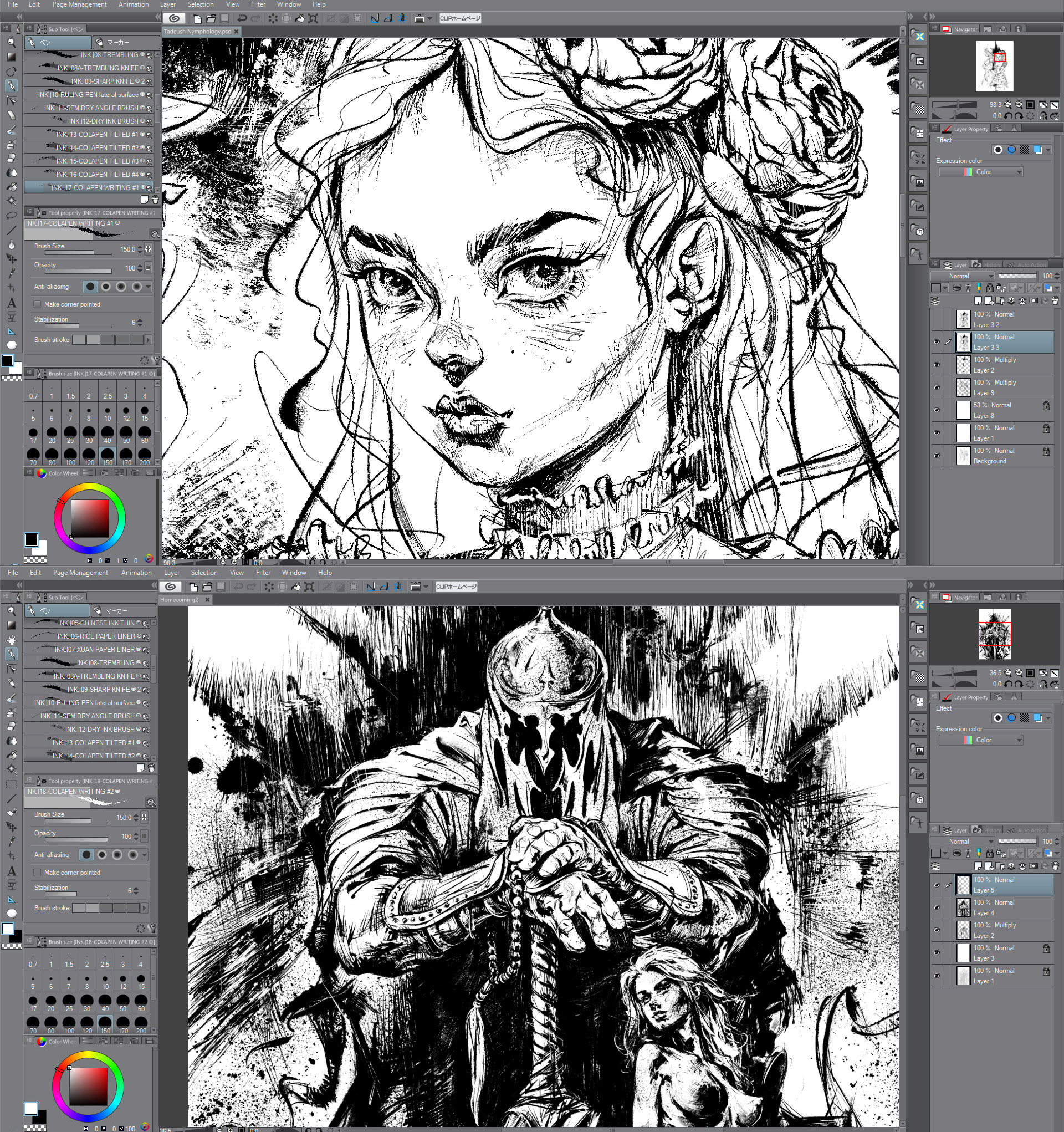

- #Manga studio 5 vs clip studio paint pro how to#
- #Manga studio 5 vs clip studio paint pro full#
- #Manga studio 5 vs clip studio paint pro professional#
I began in the upper left corner where some color was missing and continually used small brush strokes to fill in the missing color from an undamaged area. To start on this image, I began using the Clone Stamp at a relatively small brush size. (I didn’t bother with this because I’m not working on a precious family photo, just a simulated image, and I can just filter my original again if I mess up!) If you are new to restoring images, you should make a copy of your original image, either by saving a copy and working on the copy or by duplicating the image layer in your file and working on the copy layer, so that you can go back to the original if you make a mistake. In the image below, my reference point is the crosshairs on the right side of the image, but I am cloning that area to the section on the left, where the cursor is!įor photo editing using the clone stamp, you will be mainly using the Clone Stamp in short strokes and updating your reference point often. Now your tool will copy from that point to wherever you move your cursor, no matter where on the canvas you are. With the tool active, hold down the ALT key on your keyboard and click on the part of the canvas that you want to use as the reference point. To use the Clone Stamp tool, you first need to set a reference point. You can also do basic blending by turning the Brush Density down so that the copied area becomes a bit “transparent” and blends the colors together. If you find that your Clone stamp edges are too apparent, try turning the hardness down to soften the edges. The other settings that may be useful are the “Hardness” and “Brush Density” settings. With the option off, we can clone patterns and colors in the reference position area and extend them out by using small brush strokes.
#Manga studio 5 vs clip studio paint pro professional#
Overall, Clip Studio just feels more professional to me…the other two seem stripped down by comparison.Having this option turned on means that no matter where we move, the reference position moves with our cursor, so we will always make an exact copy of whatever the image is at the reference point.

Lagginess was a deal breaker for me on both ArtRage and Sketchbook - I did testing with all three on a 3300 x 4200 pixel canvas size (11″ x 14″ at 300 dpi resolution). Most importantly, Clip Studio can keep up with rapid sketching at high resolution without lagging. I also downloaded and tested ArtRage 5 and Autodesk Sketchbook Pro, but ultimately chose Clip Studio Paint for its depth of features…such as finer control of taper on both ends of strokes, and amazing vector capabilities, without it looking like vector work:
#Manga studio 5 vs clip studio paint pro full#
no scanning or photography required lossless full resolution, ready to print can rotate the drawing this way and that (for easier cross-hatching, for example) can handle high resolution drawing/painting for gallery quality prints up to 17 x 22 (biggest we can print ourselves) more relaxing since everything I did was an “experiment” which wouldn’t mess up what I’d done so far if I decided I didn’t like it ability to reposition/resize without erasing then re-drawing (one of the things that was off-putting when I used to paint portraits if a perfectly good eye was a smidge out of place, there was no choice but to paint it out and re-do it!) can work large without smudging from hand on paper

darken/lighten individual strokes, a section, or entire drawing easily (using vector layers) ability to place various parts on different layers natural/realistic look and feel of the various pencil tools It was fun! I feel a little sad that I enjoyed it more than conventional pencil on paper, but I’m also excited by the fresh possibilities of going digital.
#Manga studio 5 vs clip studio paint pro how to#
I didn’t set out with the intention of compositing them together…or any intention, really, I was just trying to figure out how to use new software ( Clip Studio Paint, aka Manga Studio, Mac desktop version, using Intuous4 PTK-440 Wacom tablet), settle on what resolution to use, try out the various pencil tools, and so on. I found it more relaxing - more right brain less left brain - to do it that way. It’s frankensteined together from three separate sketches: one for each eye, and one for nose/mouth: (Would you have known it was drawn using a stylus instead of on paper if I hadn’t said anything?) This sketch is a step along that path, a step that may represent a fork in the path actually, toward digital media rather than pencil on paper: I’ve missed some days, but am definitely drawing a lot more, and enjoying the process.


 0 kommentar(er)
0 kommentar(er)
